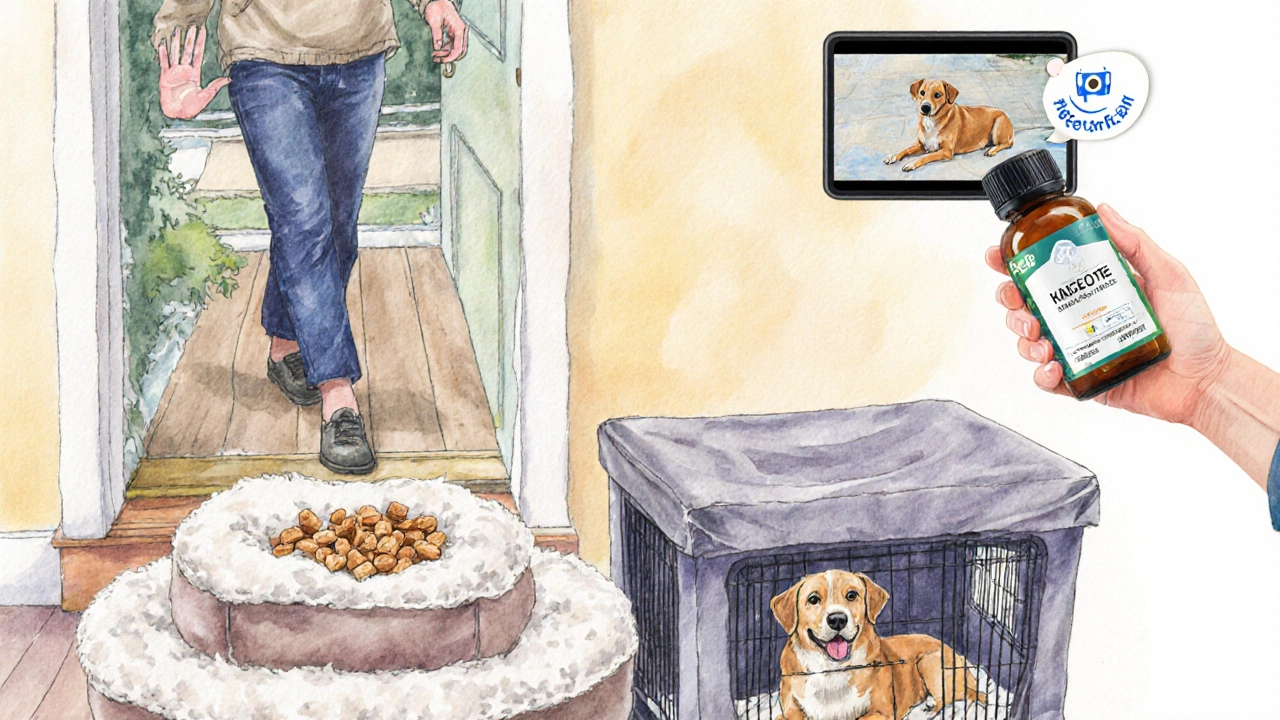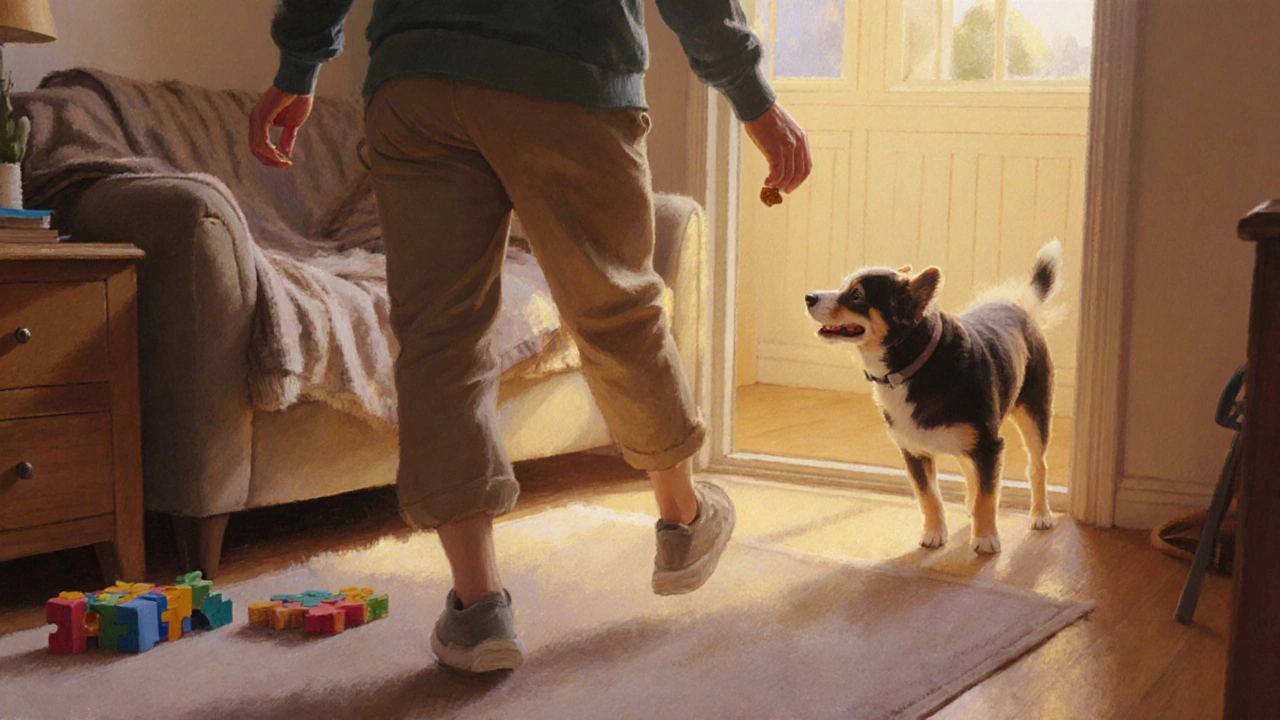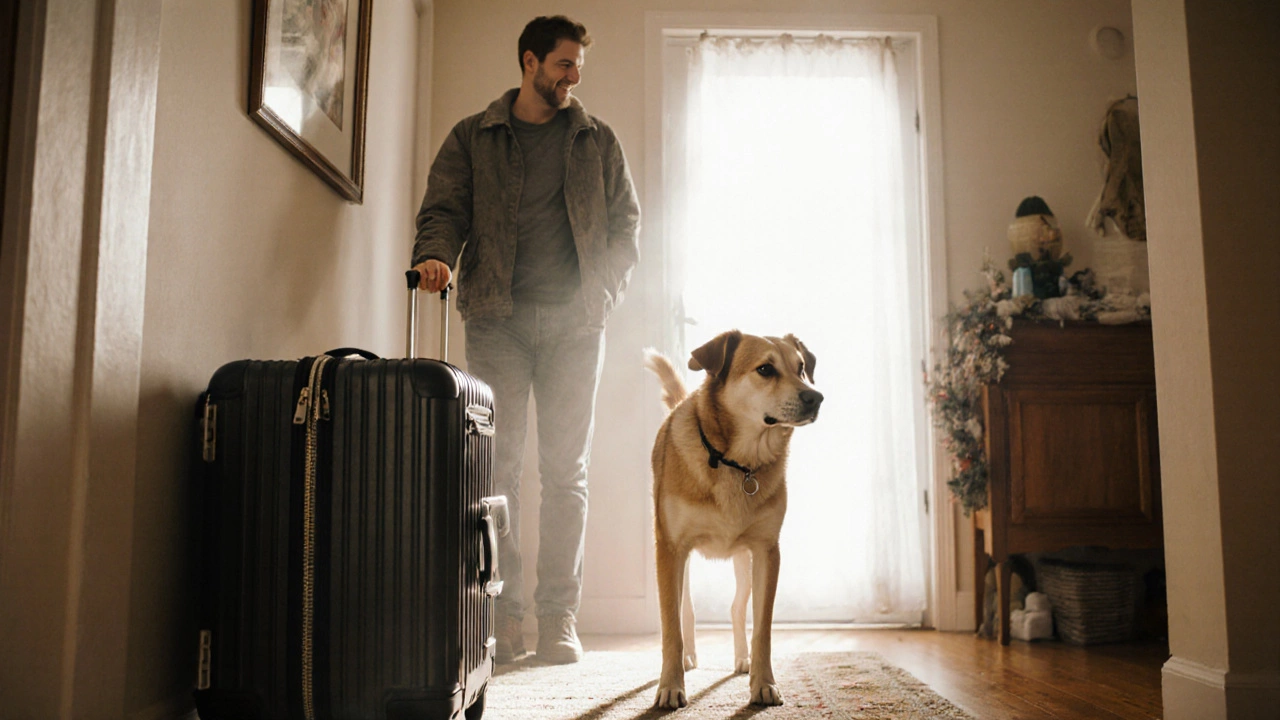Ever watched your dog stare at the door as you zip your suitcase shut and wonder, "Does my dog think I’ll never come back?" That uneasy feeling is common when a furry friend faces a long absence, especially on a trip that’s supposed to be fun for both of you. Below you’ll find a step‑by‑step guide to calming your pup, keeping the bond strong, and still enjoying a dog friendly holidays that both sides love.
Understanding Dog Separation Anxiety
Dog Separation Anxiety is a condition where a dog becomes overly distressed when left alone, often showing excessive barking, pacing, or destructive behavior. It’s not just a bad habit; it’s a genuine stress response that can affect health, digestion, and even immune function.
Typical signs include:
- Hollow, whine‑filled barking that continues for hours.
- Destructive chewing on furniture or shoes.
- Frequent attempts to escape rooms or the house.
- Loss of appetite or sudden, unexplained vomiting.
If you notice any of these, it’s a signal that your dog needs extra support before you hit the road.
Prep Work Before the Holiday
The best way to keep anxiety low is to start the preparation weeks ahead. Gradual exposure to the stressors, paired with positive reinforcement, creates a mental buffer.
- Establish a Predictable Routine - Dogs thrive on consistency. Feed, walk, and play at the same times each day for at least two weeks before departure.
- Introduce a Travel Crate that feels like a safe den. Place treats inside and let your dog explore it voluntarily.
- Practice short “goodbyes.” Leave the house for 5‑10 minutes, then return with a treat. Slowly extend the time to an hour.
- Use a Home Webcam to monitor reactions while you’re out. Seeing the footage helps you adjust strategies.
- Consult a Veterinarian about any medical causes or the need for calming supplements.
Choosing the Right Care Option While You Travel
Not every dog needs the same level of care. Below is a quick comparison of the most common solutions.
| Option | Cost (NZD/week) | Stress Level | Ideal For |
|---|---|---|---|
| Professional Pet Sitter | 30‑50 | Low - familiar home environment | Dogs with mild to moderate anxiety |
| Boarding Kennel | 35‑60 | Medium - new environment, social dogs | Highly social dogs, no severe anxiety |
| Family or Friend Stay | Free‑10 | Variable - depends on caregiver | Dogs with strong attachment to family |
Pick the option that matches your dog’s anxiety level. For severe cases, a pet sitter who can keep the routine intact usually works best.

Calming Aids That Really Help
When routine and environment aren’t enough, consider natural calming aids. Here are the most studied:
- Calming Supplements - Products containing L‑theanine, valerian root, or alpha‑casserol can reduce cortisol spikes. Look for a third‑party lab test.
- Adaptil diffusers - Release a synthetic version of the mother’s pheromone, creating a sense of safety.
- Weighted blankets - Mimic a gentle hug; they’re especially good for small breeds.
Always check dosage with your veterinarian and start a week before you travel to gauge effectiveness.
Creating a Comfort Zone at Home
Even if you opt for a kennel or a pet sitter, your dog will benefit from familiar scents and objects.
- Leave a piece of your worn clothing in the dog’s bed; the scent is reassuring.
- Place an interactive puzzle toy that dispenses treats over several hours.
- Maintain the same feeding bowl and water dish; swapping them can increase stress.
- Play a low‑volume recording of your voice or the TV show you watch together.
These little touches keep the home feeling like a safe haven, reducing the chance of an anxious outburst.

Post‑Trip Reunions: Making the Return Smooth
When you finally walk through the door, keep the greeting low‑key. A frantic welcome can reinforce the idea that you disappear for long periods.
- Enter calmly, let the dog approach.
- Offer a small treat, then go about your routine.
- Resume walks and play within an hour - it reassures the dog that life goes on.
Consistency after the trip is just as important as the preparation before it.
Quick Checklist for a Stress‑Free Dog‑Friendly Holiday
- Visit the vet 2‑3 weeks before departure.
- Start daily short separations and reward calm behavior.
- Introduce the travel crate and let the dog use it voluntarily.
- Pick a care option that matches the dog’s anxiety level.
- Trial any calming supplement at least one week prior.
- Pack favorite toys, a piece of your clothing, and a familiar blanket.
- Set up a home webcam to monitor overnight behavior.
- Plan a low‑key welcome home routine.
How long should I practice short separations before a trip?
Start at 5‑10 minutes and gradually increase to an hour over two weeks. The goal is to show the dog that you always return.
Are pet‑sitting services better than boarding kennels for anxious dogs?
Generally, yes. A pet sitter keeps the home environment unchanged, which reduces stress. Kennels can work if the dog is social and the facility offers quiet zones.
What natural supplements are safest for a dog with anxiety?
L‑theanine (found in teas), valerian root, and alpha‑casserol have the most research backing. Choose a product with third‑party testing and follow vet‑recommended dosing.
Can a home webcam help reduce my guilt when leaving?
Seeing the footage lets you see if the dog is actually distressed or just adjusting. It also helps you fine‑tune the environment (e.g., adding a soothing sound).
What’s the best way to greet my dog after a long trip?
Enter calmly, let the dog approach, give a small treat, and resume normal activities. Avoid a dramatic reunion that can reinforce anxiety.
